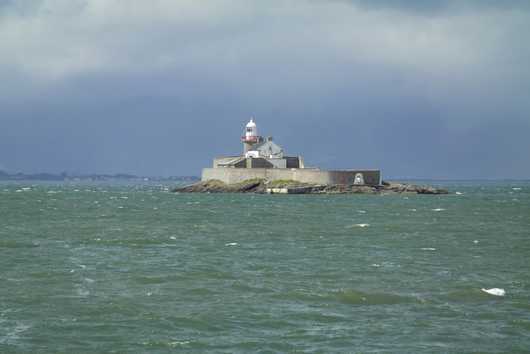Little Samphire Island

Located in Tralee Bay, just west of Fenit, lies Little Samphire Island, home to a small light station enclosed within a high perimeter wall. The lighthouse itself is a 12-meter high unpainted stone tower, crowned by a white-painted lantern room surrounded by a gallery with red railings.
Constructed in 1854 to designs by George Halpin, the founding father and Inspector of Works for the Irish lighthouse service, the station was built to appease the Fenit Pier and Harbour Board. At the time, Fenit was rapidly growing as a commercial port, notably being the sole port between Cork and Foynes. The small lighthouse, its keeper's accommodation, and the long garden are all surrounded by high walls to shelter it from the wrath of Atlantic storms, and the station remains today much as it would have been when it was first built.
The light marks the entrance to Tralee Bay and Fenit's harbour, emitting a single white flash every 5 seconds. This light exhibits several colored sectors; depending on the angle it is viewed from, it can appear red, white, or green. The white light is visible for 16 nautical miles, while the red and green areas of light can be seen for 13 nautical miles.
Converted to unwatched automatic operation in 1954, the keepers left, and the lighthouse has been operated automatically ever since. Generators installed at the lighthouse allowed for its conversion to electrical operation in 1976. Further improvements were made in 2013 when the light was converted to solar power, with panels now located on the grass in front of the lighthouse tower.
Weather permitting, Little Samphire Island is open to the public during summer months, and tours of the lighthouse can be arranged. The lighthouse can also be seen relatively well from Fenit Pier, which serves as more of a bridge between the mainland and Fenit Island where the harbour is located. Additionally, the lighthouse is visible more distantly from the N86 road on the Dingle Peninsula.
